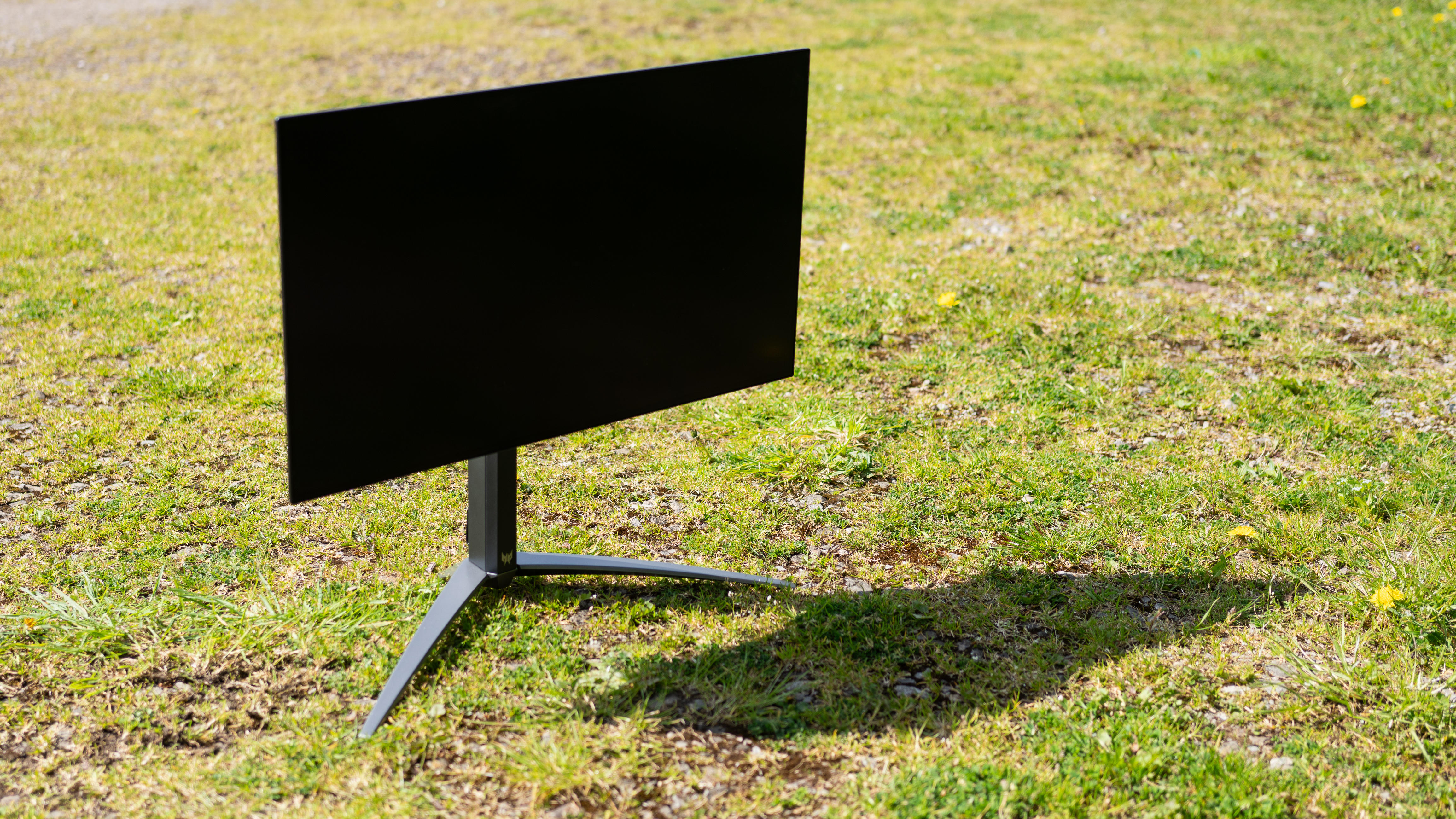
Acer’s Predator monitors have always been fast, and have always sat at the leading edge of technology when it comes to things like backlights and HDR. And while it’s taken Acer a while to release an OLED Predator, it’s finally here in the shape of the X27U, which is more than a minor upgrade over the old X27 LED-backlit model.
Fast and bright, with OLED colour reproduction and 1440p resolution, it’s a screen that’s going to be attractive to a lot of people, but it’s also quite expensive and, if it’s pure size you’re looking for and the refresh rate doesn’t matter so much, then there are other options worth exploring.
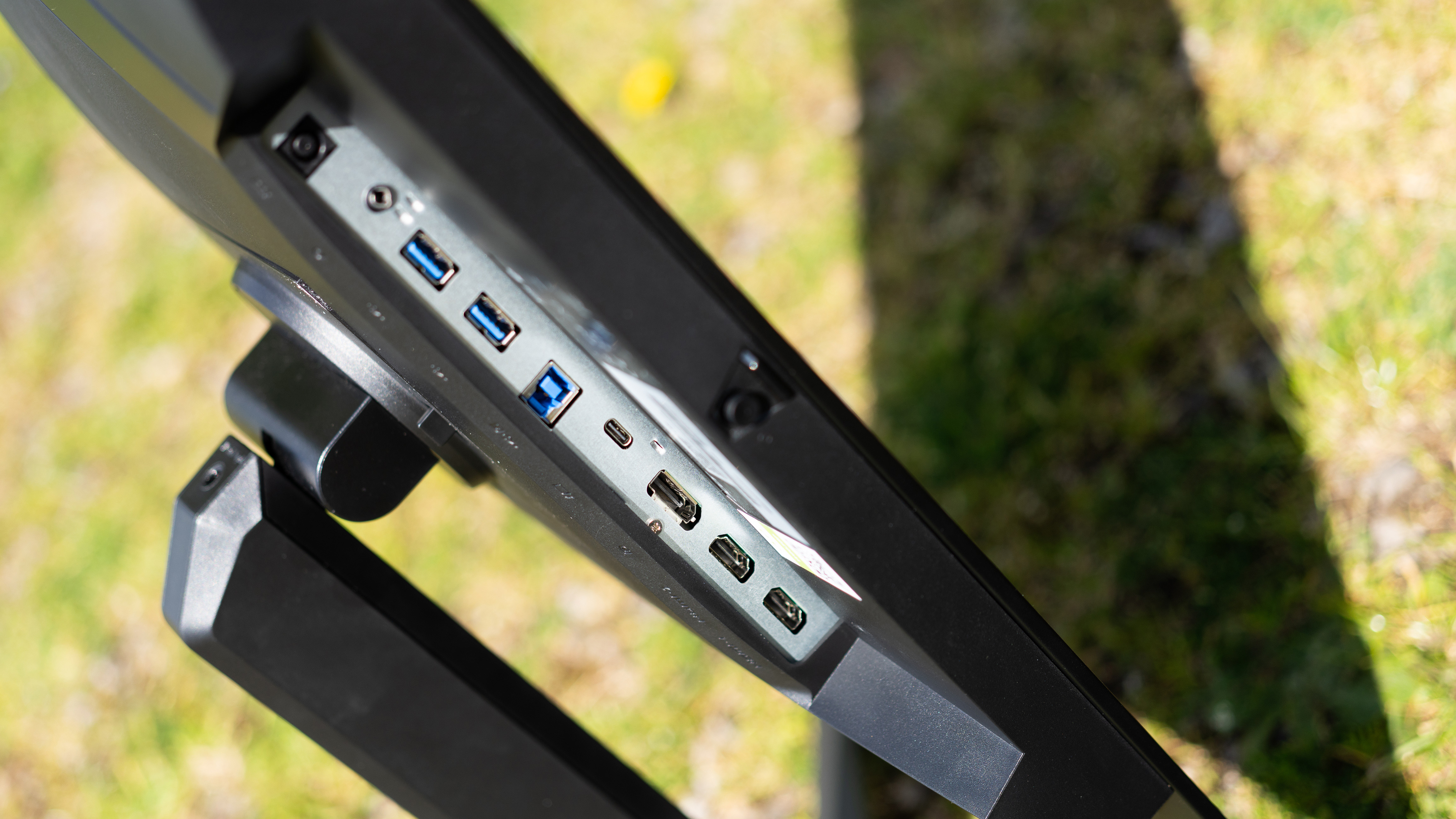
Acer Predator X27U: Key specifications
Design and build
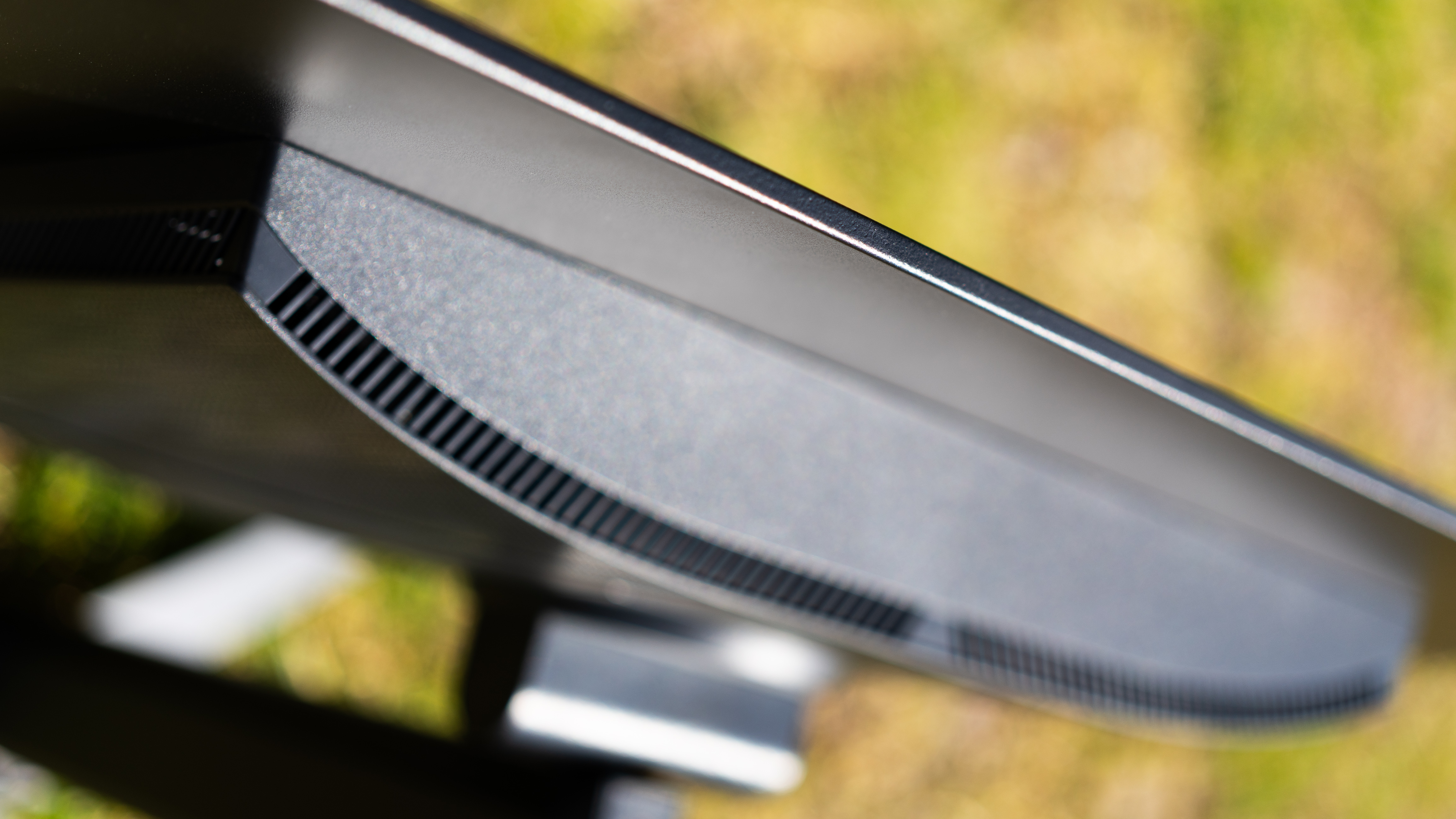
OLED panels are extremely black when they’re off, as you can see from our photographs, and the X27U sets this off with a thin bezel that’s a shade lighter than the light-sucking black rectangle that is the screen. There's a nicely designed foot too, which easily clips into the VESA mount and rests on two widely splayed feet with a vestigial third limb at the back to prevent it from falling over backwards.
The edges of the screen itself are very thin, with the inputs and, presumably, all the important bits that power its fearsome brightness and refresh rate held nearer the centre in a thicker section. The monitor is unusual in that it employs an external power brick, offloading not only the transformers that would have contributed to its chunkiness but also allowing it to use a slender barrel connector rather than a kettle lead as its power input. The inputs are fairly closely packed together and well-recessed, so you’ll need to rotate the screen to access them. The OSD controller is a small nub under the centre of the screen, and is easily accessible in use.
The stand allows complete rotation into the portrait position, as well as almost 15cm of vertical adjustment that might just prevent you from using a dictionary to raise it up. At the top of the stand is an accessory thread that could be put to use supporting a ring light or other piece of streaming equipment. If you have the monitor set to its highest vertical setting, however, you’ll need some height to your lighting mount to get it to peer over the top of the panel, as it doesn’t rise with the screen.
Features
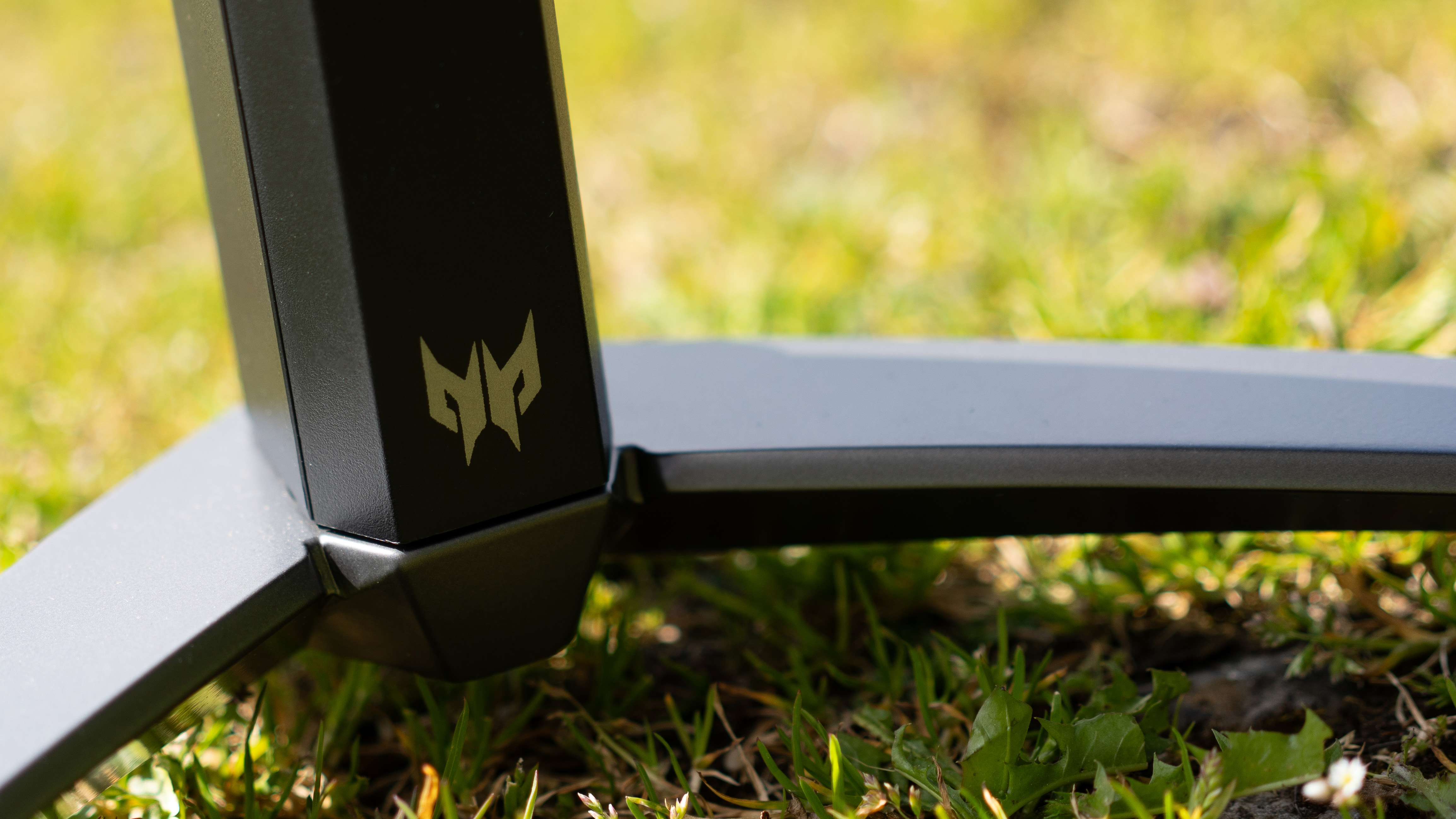
Beyond the fast, colourful OLED panel that is the headline feature of the X27U, Acer has equipped the screen with some features that will attract users from outside the gaming community, though things like AMD FreeSync Premium will help keep them entertained too.
There are plenty of inputs at the back - two HDMIs, a DisplayPort and a USB-C that can enable a single-cable connection to a compatible laptop by providing up to 90W of charging. It also has a built-in KVM switch, allowing you to swap two USB ports and a video input between two computers through the use of the USB-C and USB-B inputs (plus a separate video input for the latter). As they’re USB 3 ports you’re not limited to a mouse and keyboard receiver, so can use it to swap a flash drive or camera between PCs too.
It would have been nice to have had side-mounted access to some of these ports, as seen on the BenQ PD3225U, because if you’re likely to be switching plugs a lot it can become tiresome to swivel the screen every time, but it is good to see this level of connectivity on a gaming monitor.
Performance

This is mostly a screen made with gamers in mind - that 240Hz refresh rate and the 1440p resolution in a frame you might be expecting to go all the way to 4K makes sure of that, but there's still some interesting details that make it a potential choice for creative work, especially if the full 4K resolution isn’t essential.
For a start, that OLED panel provides not only a good colour response (hitting 100% of sRGB, 87% of Adobe RGB and 93% of P3 in our tests, which is slightly less than the 99% P3 coverage claimed by Acer, but respectable nonetheless) but has a Delta E value of less than 1, which means the input colour values and the screen’s output should differ only a very tiny amount. We measured brightness at 185 nits, which isn’t bad for SDR mode, and 400 nits are promised if you feed it HDR content.
Price
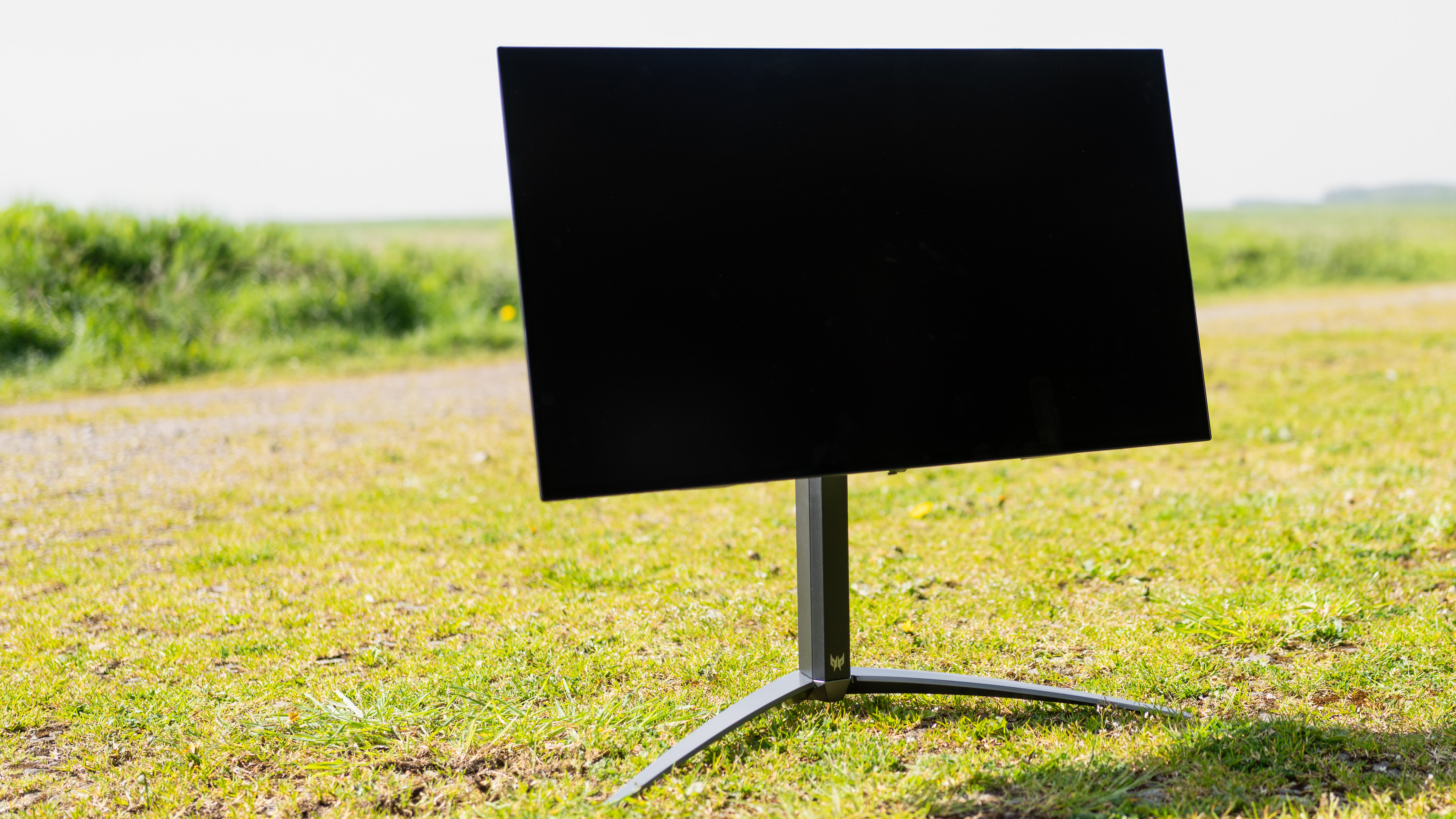
The Acer Predator X27U is currently retailing for £899.99 in the UK. Spending £900 on a monitor is something that’s bound to make a few fingers pull back from the ‘buy’ button. It’s an excellent enough screen, but it’s possible to get IPS screens with larger resolutions for less, and 28-inch TN monitors can be had for bargain basement prices. Still, it’s a screen with a lot of interesting features, and if any of them particularly appeal to you, then the £900 asking price can start to look more reasonable, especially as OLED panels tend to command higher prices.
Should I buy the Acer Predator X27U?
Gamers looking for a 240Hz screen should definitely add this screen to their wishlists, as the OLED colours and brightness are excellent alongside the high refresh rate. For creative work, the convenience of all the inputs (plus the KVM), and the colour response are probably more important than a high framerate, but it’s a screen that can easily pull double duty between your MacBook and your games PC, and if you want excellent colour, brightness, framerate and versatility in one package, then the Predator X27U is worth checking out.







